Europe 17th century
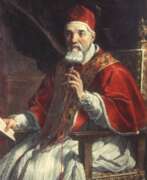

Guido Ubaldo Abbatini was an Italian Baroque painter, celebrated for his fresco works and significant contributions during the artistic fervor of 17th-century Rome. Born around 1600 in Città di Castello, Umbria, and later active in Rome and Usigni, Abbatini's career was marked by his apprenticeships under prominent artists such as Giuseppe Cesari and Pietro da Cortona. He is also noted for his association with Gian Lorenzo Bernini, under whom he worked on notable projects like the frescoes in the Cornaro Chapel.
Abbatini's works are characterized by their dynamic compositions and vibrant use of color, which were typical of the Baroque movement's dramatic style. His artistic contributions extend to several churches in Rome, where his frescoes continue to be admired for their artistic and historical significance.
For art collectors and enthusiasts interested in Baroque art, Guido Ubaldo Abbatini's works represent a pivotal chapter in Italian art history. His paintings not only reflect the rich cultural heritage of the era but also showcase the evolution of Baroque artistic expressions in Italy.
To stay updated on exhibitions and sales related to Guido Ubaldo Abbatini's works, consider subscribing to updates. This service will keep you informed about new discoveries and auction events, enhancing your collection and appreciation of Baroque art.
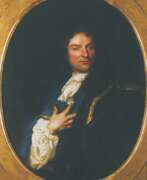

Filippo Abbiati was an Italian painter, renowned for his contribution to the Baroque period. Born in Milan in 1640, Abbiati's training under Carlo Francesco Nuvolone and Antonio Busca honed his skills, leading him to develop a distinct style characterized by fluid touch and luminous foundations. His work was heavily influenced by early seventeenth-century Lombard painting and later, the Roman Baroque and Venetian painting.
Abbiati's career was predominantly based in Milan, where he produced numerous significant religious and historical paintings. Notable works include the altarpiece of the Preaching of St. John the Baptist for the Sanctuary of the Beata Vergine dei Miracoli in Saronno and the extensive frescoes in the Milanese church of Sant'Alessandro. His masterpieces are celebrated for their dynamic composition and expressive intensity, marking a transition toward the Rococo movement.
Though details about his later years remain sparse, Abbiati's legacy lives on through his influential frescoes and the mentorship of notable students like Alessandro Magnasco. His works can still be admired in places like the Pinacoteca di Brera in Milan and the Biblioteca Ambrosiana.
For collectors and enthusiasts looking to explore the depth of Italian Baroque, Filippo Abbiati's work offers a rich narrative woven through the tapestry of art history. Sign up for updates on auctions and new discoveries related to Filippo Abbiati, ensuring you stay informed about opportunities to own a piece of this illustrious artist's legacy.
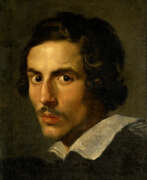

Giovanni Lorenzo Bernini, an Italian artist, is celebrated as one of the most remarkable sculptors and architects of the Baroque era. Born in Naples in 1598, Bernini's family moved to Rome when he was a child, where he spent most of his life shaping the city's artistic landscape. His prodigious talent emerged early, evident in works created in collaboration with his father, Pietro Bernini, and soon caught the attention of influential patrons like Cardinal Scipione Borghese and Pope Paul V.
Bernini's work, characterized by dynamic and exuberant style, spanned various genres including portraiture, tomb sculpture, and religious and mythological representations. His ability to turn marble into lifelike figures and scenes, blending realism with emotional intensity, was unparalleled. Key works like "Aeneas and Anchises," "Pluto and Proserpina," and "Apollo and Daphne" exemplify this mastery.
Not confined to sculpture, Bernini was also an accomplished architect, contributing significantly to the architectural landscape of Rome. His involvement with St. Peter's Basilica, notably the Baldacchino and the design of St. Peter's Square, reflect his vision of merging architecture with sculpture to create a cohesive and impactful experience. His work on the Cornaro Chapel, including the famous "The Ecstasy of Saint Teresa," showcases this integration, combining sculpture, architecture, and light to stunning effect.
Bernini's influence extended beyond Rome. In 1665, he was invited by Louis XIV to France to work on the Louvre, though his architectural designs were not realized. His portrait bust of Louis XIV, however, remains a testament to his skill in capturing not just the likeness but the essence of his subjects.
A man of deep faith, Bernini's works often reflected his religious devotion, though he was also known for his caricatures and playful sketches, revealing a lighter side to his personality. His artistic legacy, characterized by the fusion of various art forms and the dramatic use of light and space, continues to influence and inspire.
For collectors and experts in art and antiques, Bernini's works remain a pinnacle of Baroque artistry, a testament to his innovative spirit and technical brilliance. His pieces, found in museums and galleries, continue to draw admiration for their emotional depth and exquisite craftsmanship.
Stay updated on new discoveries and sales of Bernini's works by signing up for our newsletter, exclusively focused on his art and upcoming auction events.
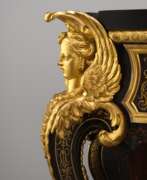

André-Charles Boulle, a French artist and cabinetmaker, was celebrated for his mastery in marquetry, a decorative technique involving inlaid veneers of wood, metal, and tortoiseshell. Born in Paris in 1642, Boulle's work defined luxury and sophistication in 17th and 18th-century French furniture, earning him the title of "Premier ébéniste du Roi" under Louis XIV. His contributions to art and culture extend beyond mere craftsmanship, embodying the opulence of the Louis XIV style and influencing European decorative arts profoundly.
Boulle's innovative techniques, particularly his unique use of marquetry, known as "Boulle work," involved intricate patterns of brass, pewter, and tortoiseshell, setting new standards for furniture design. This approach allowed him to create stunning visual effects, with his creations including clocks, cabinets, and tables that showcased both artistic flair and technical brilliance. His work, characterized by elaborate motifs and an exceptional blend of materials, is regarded as the epitome of Baroque artistry, blending sculpture, painting, and architecture into functional objects of beauty.
Several of Boulle's masterpieces are preserved in prestigious museums, such as the Louvre and the Palace of Versailles, where they continue to captivate visitors with their intricate details and historical significance. Notable works attributed to him, like the intricate coffers on stands and monumental cabinets housed in the J. Paul Getty Museum, reflect his role as a "painter in wood," celebrating French military victories and the grandeur of the Sun King's court. These pieces, never signed but attributed to him based on stylistic elements and historical records, highlight Boulle's innovative use of materials and his impact on the decorative arts.
For collectors and experts in art and antiques, André-Charles Boulle's work represents the zenith of French decorative arts. His legacy is not only in the beauty of his creations but also in the techniques he perfected, which continue to inspire contemporary designers and craftsmen. Those interested in the elegance and history of Boulle's work are encouraged to sign up for updates on new product sales and auction events related to this iconic artist. This subscription offers a unique opportunity to connect with the world of André-Charles Boulle, ensuring enthusiasts are informed of the latest discoveries and offerings that celebrate his enduring influence on culture, art, and design.
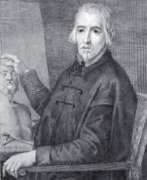

Alonso Cano was a multifaceted Spanish artist, renowned for his remarkable contributions in painting, sculpture, and architecture. Born in Granada in 1601, Cano is often celebrated as the "Spanish Michelangelo", a testament to his diverse artistic talents and significant impact on the Baroque era. His career, marked by a blend of Italian Mannerism and Baroque style, was a journey through various Spanish cities, each phase contributing uniquely to his artistic evolution.
In Seville, Cano trained under Francisco Pacheco, where his initial works like "San Francisco de Borja" (Seville Museum of Fine Arts) displayed a blend of Tenebrism and a brighter, more lyrical color palette. This period also saw the birth of works like "La Visión de San Juan" (Wallace Collection, London), signaling a transition in his style. Madrid, however, marked a significant turn in Cano's career. His works for the Buen Retiro Palace and the Alcázar showcase an evolution towards elegant, dynamic Baroque forms with lighter tonalities, influenced by the 16th-century Venetian masters.
Cano's return to Granada in 1652 was a homecoming that not only reinvigorated the Granada School but also marked his most prolific period. His masterpieces during this time include the series of paintings on the life of the Virgin in Granada Cathedral, a remarkable testament to Baroque art. Notably, his "Inmaculada Concepción" (1648) and "Nacimiento de la Virgen" (1663-1664) in the Cathedral stand as crowning achievements of his painterly career.
Equally impressive is Cano's sculptural work, where his polychrome wooden statue of the Immaculate Conception (1655) in Granada Cathedral is often hailed as his magnum opus. Despite sculpture being a secondary focus to his painting, his works, such as the Inmaculada in San Julián Church, Sevilla, and the smaller, yet exquisitely crafted, Inmaculada of the facistol in Granada Cathedral, resonate with the delicate beauty pointing towards Rococo art.
Cano's architectural prowess is exemplified in the design of Granada Cathedral's façade, an original piece of Spanish Baroque architecture. His artistic journey was not just a personal endeavor but a pivotal influence in the transition of Spanish painting towards a more idealist trend alongside Velázquez.
For art collectors and experts, Alonso Cano's works remain a cornerstone of the Baroque era, showcasing a blend of dramatic realism and spiritual depth. His influence extends beyond the boundaries of Granada, leaving an indelible mark on the world of art and culture.
To stay informed about new discoveries, product sales, and auction events related to Alonso Cano's works, sign up for our updates. This subscription focuses solely on providing relevant news in the art and antiques realm, especially concerning Cano's invaluable contributions.
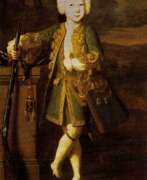

Louis Caravaque was a French portrait painter renowned for his contributions to Russian art during the early 18th century. Born in 1684 in Marseilles, France, Caravaque embarked on his artistic journey influenced by his family's background in decorative painting. His talent soon caught the attention of influential figures, leading to a pivotal contract in 1715 that took him to Russia. There, he famously painted Peter the Great and became a favored artist at the Russian court.
Caravaque's work is distinguished by his detailed and expressive portraiture, which earned him the position of the first court painter during Anna Ioannovna's reign. He played a significant role in the cultural exchanges between France and Russia, melding Western European techniques with Russian traditions. His notable works, which include portraits of Russian royalty and nobility, are held in prestigious collections such as the Hermitage and the Russian Museum in St. Petersburg.
Among his most celebrated paintings are the portraits of Peter the Great, Empress Elizabeth as an Olympic goddess, and Catherine II, showcasing his skill in capturing the grandeur and intricacy of his subjects. These artworks not only highlight his mastery of oil painting but also reflect the rich historical and cultural milieu of his time.
For collectors and art experts, the legacy of Louis Caravaque offers a fascinating glimpse into the intersection of French artistic influence and Russian imperial identity. His works remain a testament to his skill and the cultural bridge he helped forge between two distinct worlds.
For more information and to stay updated on exhibitions featuring Louis Caravaque’s work, consider signing up for updates related to this remarkable artist.
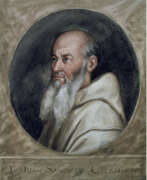

Juan Sánchez Cotán was a Spanish painter, born in 1560 in Orgaz, Toledo, and passed away in 1627 in Granada. He is celebrated for being among the earliest Spanish painters to focus on still life, a genre he significantly influenced before deciding to join a Carthusian monastery at the age of forty-three. Cotán's still lifes are renowned for their simplicity, featuring a few fruits or vegetables, some hanging from fine strings and others placed on a ledge, against a dark, almost impenetrable background. This unique style not only highlights the geometric clarity of the forms but also imbues them with a mystical quality, setting him apart from his contemporaries.
Before embracing a monastic life, Cotán had an established career in Toledo, accepting commissions for religious paintings and engaging in the secular art scene. His transition to monastic life did not halt his artistic pursuits; he continued painting, focusing on religious themes and the history of the Carthusian order. Notably, Cotán's still lifes, such as "Still Life with Quince, Cabbage, Melon, and Cucumber" housed in the San Diego Museum of Art, and "Still Life with Game Fowl" at the Art Institute of Chicago, are among the most emblematic of his work, showcasing his ability to transcend the ordinary and imbue it with profound spiritual significance.
Juan Sánchez Cotán's work is a bridge between the mundane and the mystical, capturing the beauty of simple objects with unparalleled depth and precision. His legacy is a testament to the power of still life as a genre capable of conveying complex themes of spirituality and the natural world. For collectors and experts in art and antiques, Cotán's paintings are not just visually captivating; they are portals to a bygone era that celebrated the beauty in the simplicity of everyday life.
For those interested in exploring the exquisite detail and profound tranquility of Juan Sánchez Cotán's work, signing up for updates on new product sales and auction events related to his art could enrich your collection and deepen your appreciation of this pivotal figure in Spanish art history.
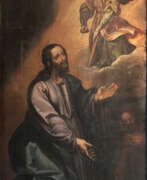

Bartolomé de Cárdenas, a Portuguese painter active in Valladolid and Madrid during the late 16th and early 17th centuries, is a distinguished figure in the world of art. He was recognized for his exceptional skills in painting, notably in creating altar-pieces and decorating convent cloisters. His artistry reflects a deep understanding of light studies and a mastery in rendering highly individualized facial features. His style, shaped by his Madrid training, is marked by a sober dignity akin to that of his contemporary Vicente Carducho.
Cárdenas' works are known for their dynamic composition, precise drawing, and graceful color schemes, displaying his expertise in handling drapery and the human form. Notable among his creations are the iconographic cycles of the Life of Saint Dominic at the convents of Atocha and San Pablo in Valladolid. His paintings for the main altarpiece of the San Pablo convent in Valladolid, including the 'Nativity' and 'Adoration of the Magi', are particularly acclaimed. A defining work of his, the 'Crucified Christ' at the Real Chancillería in Valladolid, demonstrates his interest in tenebrist lighting and a palpable sense of pathos.
Cárdenas' journey as an artist was marked by his move to Madrid following personal tragedies and the patronage of influential figures like the Duke of Lerma. His son, Juan de Cárdenas, also pursued painting, specializing in fruits and flowers. The death of his patron and the completion of his significant works in Valladolid led Cárdenas to return to Madrid, where he passed away in 1628. His legacy remains influential, particularly in the Valladolid School, a testament to his profound impact on Spanish Baroque art.
For art collectors and antique experts, Cárdenas' works offer a glimpse into the rich cultural tapestry of early 17th-century Spain. His paintings, housed in various museums and galleries, continue to captivate audiences with their blend of technical mastery and expressive depth.
To stay updated on sales and auction events related to Bartolomé de Cárdenas, sign up for our newsletter. This subscription will keep you informed about new discoveries and opportunities to acquire pieces linked to this eminent artist's legacy.
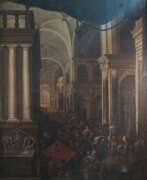

José de Cieza, a Spanish painter, was a prominent figure in the Granada School, known for his expertise in painting in distemper and oil. Born in 1656 in Granada, he was the son and pupil of the painter Miguel Jerónimo de Cieza. José's early years in Granada were marked by his work in religious paintings and decorations for the Corpus Christi festival. His talent was nurtured under the influence of the renowned Alonso Cano and Pedro Atanasio de Bocanegra.
In 1686, José moved to Madrid, where his skills flourished. He painted scenes for the Buenretiro theatre and, in 1689, earned the prestigious title of Painter to the King. His Madrid period was characterized by collaboration with other artists on projects for churches and convents. Notably, his work included paintings for the convent of the Mínimos de la Victoria in Madrid. One of his most famous works from this period, "Aparición de San Francisco de Paula," is housed in the Museo del Prado.
José de Cieza's style evolved from the influence of Cano to the full baroque of the Madrid court. His works are celebrated for their intricate detail and mastery in depicting religious themes. Unfortunately, his promising career was cut short by his untimely death in 1692.
For collectors and experts in art and antiques, José de Cieza’s works remain a testament to the rich cultural heritage of the Granada School. His paintings not only showcase artistic prowess but also serve as historical windows into 17th-century Spanish art and culture.
For enthusiasts and collectors interested in the Granada School, subscribing to updates about José de Cieza’s works is essential. Stay informed about new discoveries, sales, and auction events. Sign up now for exclusive insights into the world of this master painter.


Pedro de Mena y Medrano, baptized in August 1628 in Granada, Spain, and passing in October 1688 in Málaga, was a distinguished Spanish sculptor renowned for his emotionally charged religious sculptures. His works, primarily executed in polychromed wood, are celebrated for their incredible realism and detail, bringing a tactile and visceral presence to religious figures.
Mena's education in sculpture began under the guidance of his father, Alonso de Mena, and further honed by the teachings of Alonzo Cano. His early success was marked by contributions to the convent of St. Anthony in Granada, showcasing figures of notable saints. His significant commission for the cathedral of Málaga in 1658, involving sculptural work on the choir stalls, extended his reputation beyond his initial local fame.
Pedro de Mena is lauded for his technical mastery and the emotional depth of his work, which includes celebrated pieces such as "Ecce Homo" and "Mater Dolorosa." These works exemplify his skill in using polychrome wood to achieve lifelike representations of religious figures, engaging viewers with their expressiveness and detail. His sculptures often featured intricate details such as real human hair, glass eyes, and tears made of resin, enhancing their lifelike appearance and evoking a strong emotional response from the beholder.
Mena's legacy is firmly entrenched in the Spanish Baroque tradition, with his sculptures found in various churches and museums, including the National Museum of Sculpture in Valladolid. His artistry continues to captivate collectors and art enthusiasts, representing a pinnacle of religious sculpture during the Baroque period.
For those interested in the profound spiritual and artistic depth of Pedro de Mena's work, signing up for updates can enrich your understanding and appreciation of his contributions to the world of art. Stay informed about new product sales and auction events related to Pedro de Mena and immerse yourself in the world of Spanish Baroque sculpture.
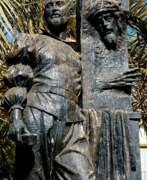

Juan de Mesa y Velasco was a Spanish Baroque sculptor born in 1583 in Córdoba and died in 1627 in Seville. He is renowned for creating several effigies used in Holy Week processions in Seville, showcasing his masterful approach to religious art during the Baroque period. Mesa was a prominent disciple of Juan Martínez Montañés, embodying the transition from Renaissance ideals to Baroque emotion and realism.
His work is distinguished by its realistic portrayal of human anatomy, intense expression, and dramatism, particularly evident in his crucified Christ figures. These sculptures not only convey the physical torment of Christ but also embody a deep spiritual passion, aligning with the Catholic Church's post-Tridentine mandates for art to be accessible and educative for the faithful. Among his notable works are the Cristo de la Buena Muerte and Jesús del Gran Poder, which remain central to Seville's Holy Week celebrations and are celebrated for their emotional depth and realism.
Despite his premature death at 44, possibly due to tuberculosis, Mesa's legacy endures through his sculptures, which continue to be objects of devotion and admiration. His ability to capture the intensity of biblical narratives and the human form has made him a pivotal figure in Spanish Baroque sculpture, with works held in high regard and still influencing the tradition of religious procession figures in Spain.
For collectors and experts in art and antiques, Mesa's work represents a peak of Baroque sculptural art, imbued with spiritual depth and technical mastery. To stay informed about new discoveries and auction events related to Juan de Mesa y Velasco, signing up for updates is recommended. This ensures access to the latest sales and insights into the enduring legacy of this Baroque master.
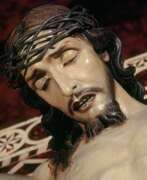

Jose de Mora was a Spanish sculptor renowned for his contributions to Baroque art. Born in Baza in 1642, Mora was the eldest son of sculptor Bernardo de Mora and notably a pupil of Alonso Cano. His career was distinguished early on when he moved to Madrid in 1669, two years after Cano's death, to work with Sebastián de Herrera Barnuevo, another of Cano's pupils. Mora's reputation was further solidified in 1672 when he became a sculptor for King Charles II, highlighting his significance in the Spanish royal court.
Mora's work is celebrated for its expressive minimalism and austere style, a deviation from his mentor Cano's approach, yet achieving a distinct artistic effectiveness. His sculptures, particularly those of religious figures, are characterized by a unique blend of realism and emotion, making them profound objects of devotion. Notable works include the Christ of Mercy and Our Lady of Sorrows in Granada, among others found in the cities of Jaén, Seville, Valladolid, and Córdoba.
One of Mora's masterpieces, the Virgin of Sorrows, is held in high esteem for its technical virtuosity. This painted pinewood bust, adorned with ivory and glass to achieve lifelike details, exemplifies Mora's skill in using realistic details to evoke emotional resonance. This piece, among others, underscores Mora's contribution to Spanish Baroque sculpture and his ability to convey intense emotion through his art.
Mora's legacy is preserved in various collections, including the Victoria and Albert Museum, which houses his bust of the Virgin of Sorrows. His works continue to be a focal point for scholars and enthusiasts of Baroque art, as seen in exhibitions and the digital archives of Wikimedia Commons, offering insight into his contributions to the art world.
For art collectors and experts seeking to delve deeper into the works of Jose de Mora, signing up for updates on new sales and auction events can offer exclusive access to acquiring pieces by this eminent sculptor. This subscription will ensure that enthusiasts are well-informed about opportunities to own a part of Spanish Baroque history.
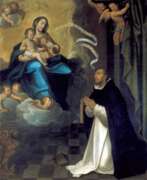

Pedro de Raxis was a Spanish painter and gilder known for his contributions to the Granadan school of art. Born in 1555 in Alcalá la Real, Jaén, Raxis became a key figure in Granada art of the Counter-Reformation era. Characterized by vivid narrative and Mannerist influences, his works are characterized by intense, luminous colors and delicate composition.
Raxis's career was marked by numerous significant commissions. Among his best-known works are the murals for the church of San Cecilio in Granada (1580), the retablos of Santa María Mayor de Alcaudete (Jaén) and Asunción de María in Granada Cathedral (1615). These works demonstrate his exceptional skill in estofado, a technique involving the gilding and polychroming of statues and altarpieces.
One of Raxis's most famous works is Aparicion de la Virgen a San Jacinto, preserved in the Granada Museum of Fine Arts. This painting, dating from around 1600, represents a significant achievement in Raxis's artistic journey. It illustrates the mystical ecstasy and contemplative rapture characteristic of Spanish Baroque culture. The expressive depth and rich tonal range of the painting became more evident after its restoration in 1998.
Pedro de Raxis's influence extended beyond his paintings. Contemporaries such as Francisco Pacheco praised his mastery of estofado and gilding. Raxis established one of the most prolific and versatile workshops in Granada, which left an indelible mark on the artistic landscape of Andalusia.
For collectors and art experts, Raxis' work remains a testament to the rich cultural heritage of the Granada school. His paintings not only reflect the artistic fervor of the era, but also provide a glimpse into the religious and cultural world of Counter-Reformation Spain.
To delve deeper into the world of Pedro de Raxis and to keep up to date with new sales and auction events related to this master of the Granada School, subscribe to our updates. Our subscription will keep you up to date with the latest offers and events.


Jusepe de Ribera, a Spanish painter, etcher, and draughtsman, was a notable figure in the world of art, renowned for his distinct style and contribution to Castilian tenebrism. Born in 1591 in Játiva, near Valencia, Spain, Ribera's early life and artistic origins are somewhat shrouded in mystery, with no definitive documentation on his initial training. However, it's speculated that he might have started his artistic journey in Valencia.
Ribera's career took a significant turn when he moved to Italy, where he spent the majority of his professional life, predominantly in Naples, a Spanish territory at that time. He arrived in Naples around 1616 and soon established himself as an important artist in the city. His marriage to Caterina Azzolino, daughter of Sicilian painter Giovanni Bernardino Azzolino, in November of the same year, further solidified his connections in the Italian art scene.
Ribera was deeply influenced by Caravaggio and is often described as one of Caravaggio's followers. His early works displayed a marked tenebrism, characterized by stark chiaroscuro and a robust, scratchy handling of paint. However, Ribera's style evolved over time, moving away from this intense tenebrism to incorporate more color and softer modeling in his later works.
His body of work is diverse, including altarpieces, religious subjects, mythological themes, and portraits. Ribera had a penchant for depicting scenes of martyrdom with graphic realism, as seen in works like the celebrated "Martyrdom of St Bartholomew." Yet, he was also capable of expressing great tenderness, evident in paintings such as "The Adoration of the Shepherds." His secular subjects often depicted philosophers as beggars or vagabonds, adding a unique dimension to the Baroque repertoire.
Ribera's influence extended beyond Naples to Spain and the broader European art scene. He played a foundational role in fostering a respect for individual humanity in Spanish art, a trend that continued with artists like Velázquez and Goya. His works were widely exported to Spain and had a significant impact on both Italian and Spanish art. Ribera remains a highly respected figure in art history, and his works are featured in prominent museums and galleries worldwide, showcasing his enduring legacy in the realm of art and culture.
For art collectors and experts, Ribera's works represent a crucial chapter in the development of European art, particularly in the context of the Spanish Baroque and the evolution of tenebrism. His innovative approach to subject matter and technique continues to inspire and captivate audiences, making his works highly sought after in the world of art and antiques.
To stay updated on sales and auction events related to Jusepe de Ribera, sign up for our updates. This subscription service is tailored specifically for enthusiasts and experts in art and antiques, ensuring that you are the first to know about new opportunities to acquire works related to this influential artist.
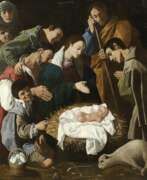

José de Sarabia, a distinguished Spanish painter, was a prominent figure in the Baroque art movement. Born in Seville in 1608, Sarabia was the son of the painter Andrés Ruiz de Sarabia. His journey into the realms of art began under the tutelage of Francisco de Zurbarán, alongside Antonio del Castillo of Cordoba. After completing his education, Sarabia moved to Cordoba around 1630, marking the start of his significant contributions to the Cordoba School.
Sarabia's art was characterized by its archaic style and mannerist influences, evident in his use of engravings in his compositions. His works often featured religious themes, especially dedicated to the Immaculate Conception. He painted numerous works for public places and private homes, though unfortunately, many of these are no longer extant or cannot be attributed to him with certainty due to his habit of not signing his works.
Among Sarabia's notable works, "Adoración de los Pastores" (Adoration of the Shepherds), housed in the Museum of Fine Arts of Cordoba, showcases his intense naturalism. This piece, if truly his, ranks him among the finest followers of Zurbarán. Another significant work attributed to Sarabia is "Santa Victoria," reflecting his deep religious insights and artistic prowess.
As an Artist and Painter of the Baroque period, José de Sarabia's legacy in the Cordoba School is marked by his intense devotion to religious art, his unique style blending mannerism and naturalism, and his influence on the artistic landscape of Cordoba.
For art collectors and experts, understanding Sarabia's work offers insights into the evolution of Spanish Baroque painting and the cultural milieu of the time. His contributions to the Cordoba School represent a critical chapter in the history of Spanish art, particularly in the realm of religious and Baroque paintings.
To stay informed about updates related to José de Sarabia, including new product sales and auction events, sign up for our updates. This subscription ensures you are always in the know about the latest developments and opportunities related to this illustrious artist's works.
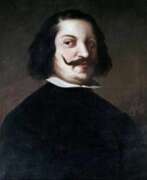

Juan de Valdés Leal, born on May 4, 1622, in Seville, Spain, and passing away on October 15, 1690, was a Spanish painter and etcher celebrated for his Baroque era works. Valdés Leal is recognized for his dramatic and often somber thematic paintings which starkly contrasted with the serene styles of his contemporaries. His notable contributions include not just painting but also sculpture and architecture, indicating his versatile artistic talents. Educated under Antonio del Castillo in Córdoba, Valdés Leal's body of work covers religious and vanitas themes, emphasizing the transient nature of earthly life and the inevitability of death.
One of Valdés Leal's significant periods was after his return to Seville in 1656, where alongside Bartolomé Esteban Murillo, he co-founded the Seville Academy of Art. This period marked the creation of some of his most poignant works, including "In ictu oculi" and "Finis gloriae mundi," which he painted for the Charity Hospital in Seville. These works are revered for their deep contemplation on mortality and the fleeting nature of worldly success.
Valdés Leal's legacy extends beyond his own lifetime, with several of his children, including Lucas, Juan, Maria, and Laura, following in his artistic footsteps. His influence persisted in Seville's artistic landscape, especially in religious art, where his pieces continued to inspire both awe and reflection.
For collectors and experts in art and antiques, Juan de Valdés Leal's work offers a profound glimpse into the Baroque era's complex interplay of beauty, spirituality, and the macabre. His paintings, many of which reside in museums and private collections worldwide, remain a testament to his skill and depth as an artist.
To stay updated on sales and auction events related to Juan de Valdés Leal's works, signing up for updates can provide exclusive access to the latest available pieces and related events, ensuring enthusiasts and collectors don't miss out on acquiring or viewing works by this illustrious artist.
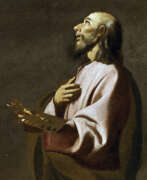

Francisco de Zurbarán was a Spanish painter, celebrated for his profound religious paintings and his skill in using chiaroscuro, which emphasized dramatic contrasts between light and dark. Born in Fuente de Cantos, Extremadura, in 1598, Zurbarán's work is marked by a stark, realistic style that earned him the nickname "Spanish Caravaggio".
His early years in Seville were foundational, leading to significant commissions that established his reputation. Among these was a contract with the Dominican monastery San Pablo el Real in Seville, for which he produced 21 paintings within eight months, depicting the life of Saint Dominic and other religious figures. His work was characterized by a direct and spiritual nature, as seen in his portrayals of monks, nuns, and martyrs, as well as his still-life compositions.
Despite facing a decline in reputation towards the latter part of his career, overshadowed by the sentimental religiosity of Murillo, Zurbarán's influence persisted. His later years saw him moving to Madrid, where he died in 1664. Zurbarán's ability to convey monastic sentiments and a realistic presentation of nature, along with his innovative use of light, have cemented his legacy as a major figure in Spanish Baroque painting.
For collectors and experts in art and antiques, Zurbarán's works offer a glimpse into the spiritual and aesthetic sensibilities of the Spanish Baroque era. His paintings, such as those housed in the National Gallery, London, and the Museo Nacional del Prado in Madrid, continue to inspire and captivate audiences with their intensity and devotion.
To stay updated on new discoveries and auction events related to Francisco de Zurbarán's work, sign up for updates. This subscription will keep you informed about sales and events specifically related to this key figure in Baroque art, ensuring you don't miss an opportunity to engage with Zurbarán's enduring legacy.
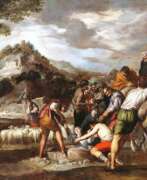

Antonio del Castillo y Saavedra was a Spanish Baroque painter, sculptor, and poet, renowned for his significant contributions to the Cordoba School of art. Born in Cordoba, Spain, in 1616, Castillo y Saavedra grew up under the influence of his father, Agustín del Castillo, also a painter. His early education continued under Ignacio Aedo Calderón, and later, in Seville, he studied with Francisco de Zurbarán and his uncle Juan del Castillo.
Castillo y Saavedra's work is distinguished by its adherence to naturalism, a style he maintained despite the evolving Baroque trends of his time. His landscapes and narrative paintings, often featuring elaborate architectural or landscape settings, showcase his unique spatial sense and meticulous studies of nature. Praised as an "excellent landscape painter" by his contemporaries, Castillo y Saavedra was adept at capturing nature's essence and integrating it seamlessly into his historical oil paintings. His works, such as the Calvary of the Inquisition and the series on the life of Joseph, exhibit a luminous sense of landscape with refined color palettes.
Some of his most celebrated works are housed in prestigious institutions around the world. The Museo del Prado in Madrid, Spain, holds an impressive collection of his paintings, including the notable series on the story of Joseph. The Museo de Bellas Artes de Córdoba also features his significant works, like the Calvary of the Inquisition.
Despite his death in 1668, Castillo y Saavedra's legacy lives on through his contributions to the Cordoba School, influencing generations of artists who followed. His work remains a testament to the rich cultural heritage and artistic prowess of the Spanish Golden Age.
For collectors and experts in art and antiques, Antonio del Castillo y Saavedra's works represent a pinnacle of Baroque art. To stay informed about new sales and auction events related to Castillo y Saavedra's work, we invite you to sign up for our updates. This subscription will keep you at the forefront of the latest developments in this fascinating field.
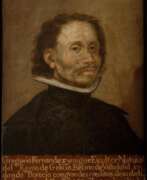

Gregorio Fernández was a Spanish Baroque sculptor, celebrated for his profound impact on religious art during the 17th century. Born in Sarriá, Lugo, in 1576 and later settling in Valladolid, Fernández became a pivotal figure in the Castilian school of sculpture. His works are renowned for their dramatic expressiveness and intricate detail, capturing both physical and moral pain alongside mystical experiences through the serene poses and expressive faces and hands of his figures. The realism in his sculptures was further enhanced by the use of glass for eyes, ivory for nails and teeth, and other materials to add authenticity.
Valladolid's artistic environment, shaped by the Counter-Reformation and the legacy of architects like Juan de Herrera, played a crucial role in Fernández's development. His sculptures for altarpieces and processional "pasos" like the famous "Camino del Calvario" are notable for their blending of naturalistic detail and classical support structures, creating a dynamic interplay of form and religious narrative.
Fernández's mastery is evident in a range of works, from the serene "Pietà" to the detailed "Cristo Yacente," and his influence extended across Spain, from Madrid to Galicia and Extremadura. His collaboration with painters on the polychrome of statues added a vibrant dimension to the sculptures, enriching their emotional impact.
For collectors and experts in art and antiques, Fernández's contributions to the Spanish Baroque period exemplify the height of religious sculpture, blending technical skill, emotional depth, and theological significance. His legacy continues to inspire and resonate within the art world, with many of his works preserved in museums and galleries, including the Museo Nacional de Escultura in Valladolid.
If you're passionate about the art of Gregorio Fernández and wish to explore his works further, consider signing up for updates on new product sales and auction events related to this remarkable sculptor. Stay informed and enrich your collection with pieces that celebrate his enduring legacy.
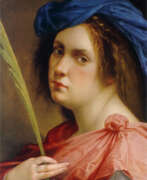

Artemisia Gentileschi was a pioneering Italian painter of the Baroque era, celebrated for her vivid portrayals of dramatic scenes and strong female figures drawn from mythology, allegory, and the Bible. Born in Rome in 1593, Gentileschi broke through the gender barriers of her time to become one of the first women to achieve fame as an artist. Her early exposure to painting came through her father, Orazio Gentileschi, a follower of Caravaggio, whose influence is evident in Artemisia's use of chiaroscuro and realistic, emotional expression.
Gentileschi's artistry is particularly noted for its naturalism and the dynamic use of color, which she employed to convey depth and drama. Among her most renowned works are "Susanna and the Elders" (1610), showcasing her skill in portraying the vulnerability and dignity of its subject, and "Judith Slaying Holofernes" (c. 1614–1620), a vivid depiction of strength and determination, housed in the Uffizi Gallery. These works, along with others like "Judith and Her Maidservant" (1625) in the Detroit Institute of Arts, highlight her unique ability to present female subjects not just as objects of beauty, but as agents of power and action.
The complexity of Gentileschi's life, including her survival of rape by Agostino Tassi and the subsequent trial, has often overshadowed her artistic achievements. However, modern scholarship and exhibitions, such as those at the National Gallery in London, have reevaluated her contributions, positioning her as a significant figure in art history for both her mastery of Baroque painting techniques and her role in challenging the era's gender norms.
For art collectors and experts, Gentileschi's works are emblematic of the Baroque spirit and a testament to the resilience and talent of women artists in a male-dominated field. Her paintings are not only valuable for their aesthetic and historical significance but also for their inspirational narrative of overcoming personal and societal challenges.
To stay updated on new product sales and auction events related to Artemisia Gentileschi, signing up for updates is recommended. This subscription ensures you remain informed about opportunities to acquire pieces related to this groundbreaking artist, without any pomp or unnecessary fluff, focusing purely on her incredible legacy in the realms of culture, art, and painting.
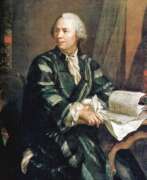

Georg Gsell was a Swiss Baroque painter, art consultant, and art dealer, renowned for his contributions to the arts during the early 18th century. Born in St. Gallen on January 28, 1673, Gsell's journey in the arts took him across Europe. He moved to Amsterdam in 1704, and later to Russia on the invitation of Peter the Great in 1716. In Russia, he served as the first curator of the Imperial art gallery, a significant cultural institution founded in 1720.
Gsell's work is appreciated for its meticulous detail and historical value. He catalogued the Kunstkamera, Russia's first museum, through detailed manuscript forms, a significant contribution to the preservation of early 18th-century European and Russian cultural artifacts. His artworks, which include portraits and still lifes, reflect the Baroque style's complexity and elegance.
For art collectors and experts, Georg Gsell's legacy offers a glimpse into the Baroque period's artistry and the early days of museum curation in Russia. His works and contributions remain subjects of study and admiration in art circles today.
For updates on exhibitions and sales related to Georg Gsell's works, sign up for our newsletter. This subscription will keep you informed about new findings and auction events specifically pertaining to Georg Gsell's art.
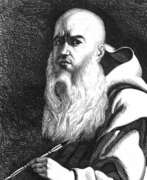

Joaquim Juncosa was a Spanish Baroque painter and Carthusian monk, whose work left an indelible mark on the art world. Born in 1631 in Cornudella, Tarragona, Juncosa's talent emerged early, nurtured in a family of painters. By 1660, he had joined the Carthusian monastery of Scala Dei, propelling his career and solidifying his reputation as a preeminent painter of the Catalan Baroque.
Juncosa's skill was not confined to a single genre; he was adept at both portraits and frescoes. His works, primarily commissioned by monasteries and private residences, reflected a distinct Baroque style tempered with a unique restraint. This style may have been influenced by his time in Rome and his exposure to Roman painting trends. Unfortunately, much of his work at Scala Dei was destroyed in the Ecclesiastical confiscations of Mendizábal in 1835 and the Spanish Civil War in 1936.
Despite these losses, Juncosa's legacy endures. His remaining works, including the twelve canvases of "Mysteries of the Rosary" at the Carthusian monastery in Valldemossa, Majorca, and pieces preserved at the Sant Jordi Fine Arts Academy and Museo del Prado in Madrid, continue to captivate art enthusiasts and experts alike. His ability to convey depth and emotion through his art makes him a celebrated figure in the world of Baroque painting.
For collectors and art and antiques experts, Joaquim Juncosa's works offer a glimpse into the rich tapestry of Spanish Baroque art. His paintings not only showcase his technical prowess but also provide an insight into the cultural and religious milieu of his time. To stay updated on new product sales and auction events related to Juncosa, sign up for our updates. Rest assured, our subscription is purely informational, focusing on bringing you the latest in the art world.
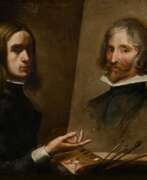

Jusepe Martínez, a Spanish painter born in Zaragoza in 1602, was not just an artist but also a significant contributor to art literature. His work, "Discursos practicables del noblisimo arte de la pintura," written around 1675 but published posthumously in 1866, remains a testament to his expertise and his impact on the art world.
Martínez's journey in art took him beyond the borders of Spain. His studies and work in Italy, coupled with his experiences in Spain's major artistic and literary centers, notably enriched his perspectives. This broad exposure influenced his participation in the Aragonese school, where he was actively involved in the cultural life of his time. His interactions with prominent artists like Diego Velázquez and Alonso Cano, as well as with writers and intellectuals of the Spanish Golden Age, infused his work with a depth and richness that transcended the typical.
What sets Martínez's treatise apart is not just its practical insights into painting but its philosophical underpinnings. His discussions on art go beyond mere technique, delving into pictorial aesthetics and the very vocation of painting. This approach demonstrates a nuanced humanism, making his work resonate more with philosophical discourses than with typical instructional art books.
For art collectors and experts, Martínez's work offers more than historical knowledge. It provides a window into the artistic soul of the 17th century, reflecting the thoughts and practices of one of the period's most thoughtful artists. His writings not only guide the hand but also inspire the mind, offering valuable insights into the art of that era.
For those keen on exploring Martínez's legacy further, his self-portrait with his father, Klaas de 2de, around 1630, is a remarkable piece housed in the Zaragoza Museum. This work exemplifies his skill and artistic expression, offering a glimpse into his personal life and artistic journey.
If Jusepe Martínez's story intrigues you and you wish to stay informed about similar artists, sign up for our updates. We focus on bringing you the latest on product sales and auction events related to key figures like Martínez. Join our community of art enthusiasts and collectors to ensure you don't miss out on these exclusive opportunities.
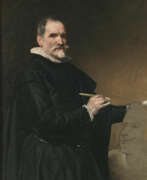

Juan Martínez Montañés, born on March 16, 1568, in Alcalá la Real, Jaén, Spain, and passing away on June 18, 1649, was a luminary of the Spanish Baroque sculpture scene, heralded as "el Dios de la Madera" (the God of Wood) for his unrivaled mastery in wood carving. His contributions significantly shaped the Sevillian school of sculpture, where he introduced the innovative encarnación technique, imbuing his wooden sculptures with lifelike skin tones.
Montañés is celebrated for his exceptional naturalism and precision in depicting human anatomy, setting him apart from many contemporaries. His works, characterized by their graceful forms and devout expressions, often encapsulated the religious fervor of the era. Notable pieces include the highly revered 'Saint John the Baptist', showcased at The Metropolitan Museum of Art, and 'Cristo de la Clemencia', housed in the Seville Cathedral, each illustrating his skillful handling of wood and keen attention to anatomical detail.
Throughout his life, Montañés enjoyed significant acclaim, not only within Spain but also internationally, with some of his works making their way to the Spanish Americas. This broad recognition is a testament to his influence on and contribution to the Baroque artistic movement. His legacy persisted through his students, including notable figures such as Juan de Mesa, and through his son, Alonzo Martínez, ensuring the continuation of his stylistic and technical innovations in sculpture.
For collectors and art and antiques enthusiasts, Montañés's works remain pivotal, embodying the spiritual and artistic zeitgeist of 17th-century Spain. His sculptures are not just artistic marvels but also cultural artifacts that offer insights into the era's religious and social contexts.
To stay informed about exhibitions featuring Juan Martínez Montañés's works or upcoming auction events related to this pivotal figure in Baroque sculpture, consider signing up for updates. This subscription ensures you're always in the know about opportunities to engage with Montañés's enduring legacy.
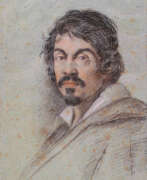

Michelangelo Merisi da Caravaggio, an Italian painter, was a pivotal figure in the transition to Baroque art. Born in Milan or the town of Caravaggio in 1571, his work is renowned for its realistic depiction of human emotion, dramatic use of lighting, and less-than-idealized portrayal of subjects, which broke away from the Mannerist style prevalent at the time.
Caravaggio's life was as dramatic as his art. In 1592, he moved to Rome, where, despite initial hardships, his unique style caught the eye of Cardinal Francesco del Monte, leading to his first public commissions. His success, however, was marred by a tumultuous life filled with brawls and legal troubles. Notably, in 1606, he fled Rome after killing Ranuccio Tommasoni in a brawl, an act that led to a death sentence. He sought refuge in Naples, Malta, and Sicily, continuing to create influential works while attempting to secure a papal pardon.
His most significant contributions to art include introducing a style that combined naturalistic detail with dramatic lighting (chiaroscuro) and psychological realism. This approach had a profound impact on the evolution of Baroque painting. Some of his notable works include "Basket of Fruit," "The Calling of St. Matthew," "The Beheading of St. John the Baptist," and "Supper at Emmaus." These works are characterized by their innovative composition and the intense emotional state they convey.
Caravaggio's fame waned after his death in 1610 under mysterious circumstances while traveling from Naples to Rome. However, the 20th century saw a resurgence in interest in his work, acknowledging his significant influence on Western art.
For collectors and art experts, Caravaggio's works represent a pivotal moment in the history of art, where the transition from Renaissance ideals to Baroque realism is profoundly evident. His paintings can be seen in various museums and galleries, offering a glimpse into the dramatic and emotive potential of art.
To stay updated on sales and auction events related to Caravaggio's works, signing up for updates can be a valuable resource for enthusiasts and collectors. This subscription will provide timely information on new opportunities to acquire pieces linked to this influential and groundbreaking artist.
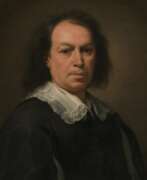

Bartolomé Esteban Murillo was a Spanish painter, renowned for his contributions to the world of art and culture. Born in Seville, Spain, in the 17th century, Murillo specialized in religious and genre painting, leaving a lasting impact on the art world.
Murillo is known for his remarkable ability to infuse his paintings with deep emotion and realism. His works often depicted scenes from everyday life, as well as religious subjects. One of his notable specialties was his exceptional skill in capturing the innocence of children in his artwork. His use of soft colors and delicate brushwork gave his paintings a unique and timeless quality.
One of Murillo's most famous works is the series of paintings known as the "Immaculate Conception." These paintings, which depict the Virgin Mary as a young girl, have been praised for their beauty and devotion. Many of his works are housed in museums and galleries around the world, attracting art enthusiasts and collectors.
For collectors and art experts, Murillo's works hold a special place in the art world, with their ability to evoke powerful emotions and capture the essence of the human experience. To stay updated on the latest news and events related to Bartolomé Esteban Murillo's paintings and exhibitions, consider subscribing to our newsletter. We'll keep you informed about new product sales and auction events featuring this exceptional artist's works. Join us in celebrating the legacy of Bartolomé Esteban Murillo and his invaluable contributions to the world of art.
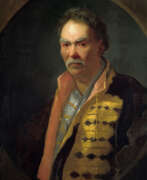

Ivan Nikitich Nikitin (Russian: Иван Никитич Никитин) was a Russian painter renowned for his masterful portraits and battle paintings, born around 1690 in Moscow into an Orthodox priest's family. His early exposure to art came from Dutch artist Schwonbek at the Kremlin Armoury engraving shop. Nikitin’s talent flourished under the patronage of Peter the Great, leading to his appointment as a court painter after educational stints in Florence and Venice.
Nikitin's artistry is marked by a transition from the rigid, dark background of the parsuna style to the vibrant and emotive tones of Baroque painting. His most celebrated works, often housed in major Russian museums like the Tretyakov Gallery and the Russian Museum, include portraits of significant historical figures such as Peter the Great and Count G. I. Golovkin. These works are praised for their psychological depth and the innovative use of light and shadow typical of the Baroque period.
Tragically, Nikitin’s career suffered a severe setback when he was imprisoned and later exiled due to political turmoil, although he was eventually pardoned. His life ended on a poignant note as he died in 1742 while returning to Saint Petersburg after his amnesty.
To receive updates on exhibitions and sales featuring Ivan Nikitich Nikitin's work, sign up for our newsletter. Stay informed about the latest opportunities to appreciate and acquire artwork from this master of Baroque painting.
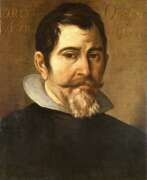

Pedro Orrente was a Spanish painter, renowned for his contributions to Tenebrismo toledano and early Baroque art. Born in Murcia in 1580 and active until his death in Valencia in 1645, Orrente was a pivotal figure in Spanish painting. His style, often compared to the Venetian Bassano family, was notable for blending Old-Testament subjects with lush landscapes, earning him the moniker "the Spanish Bassano."
Orrente's journey as an artist was marked by his travels and influential associations. After beginning his career in Murcia, he moved to Toledo, where he was influenced by the works of the Bassano family and other Venetian masters. His travels to Venice and Rome enriched his art, as he assimilated the naturalism of Caravaggio and the vibrant styles of Titian, Tintoretto, and Veronese.
His works, celebrated for their naturalistic approach and dynamic compositions, can be found in significant collections. The Prado Museum in Madrid houses several of his paintings, including "The Adoration of the Shepherds" (1623-1625) and "Labán da alcance a Jacob." The Metropolitan Museum of Art in New York features his work "Thomas of Villanova, Archbishop of Valencia Distributing Alms to the Poor," showcasing his mastery in drawing. Orrente's "The Crucifixion," a powerful depiction of Christ's crucifixion, is another testament to his talent, blending dramatic composition with a profound understanding of human emotion.
Orrente's influence extended beyond his lifetime, shaping the works of artists like Esteban March, Pablo Pontons, and Mateo Gilarte. His legacy in the Baroque art movement is undeniable, as he pioneered the integration of naturalistic styles in Spain.
For art collectors and experts, understanding Orrente's contributions offers a deeper insight into the evolution of Baroque art. His works not only reflect the artistic trends of his time but also his unique interpretation of biblical narratives and natural landscapes.
For enthusiasts of Pedro Orrente's art and the Baroque era, signing up for updates is essential. Our subscription service offers the latest news on product sales and auction events related to Orrente's works. This is a unique opportunity to stay informed about the availability of masterpieces by this eminent artist.
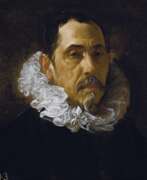

Francisco Pacheco del Río, baptized on November 3, 1564, and passing away on November 27, 1644, was a distinguished Spanish painter. Renowned for his dual role as Diego Velázquez's teacher and father-in-law, Pacheco's influence extends beyond his familial ties, contributing significantly to the arts through his seminal textbook, "Art of Painting." This work remains a crucial resource for understanding 17th-century artistic practices in Spain. Often referred to as the "Vasari of Seville," Pacheco's insights into painting theories and reflections on his contemporaries have left an indelible mark on the history of art, despite criticisms of his conventional execution in painting.
Pacheco's early life was marked by an immersive education in art, learning from Luis Fernandez and drawing inspiration from Italian masters. His journey included a pivotal sojourn to Madrid and Toledo in 1611 to study the works of El Greco, which further enriched his artistic repertoire. Upon his return to Seville, Pacheco opened an art school, laying the groundwork for his future contributions to art education and theory.
His career was notably characterized by his position as the official censor for Seville's Inquisition, which influenced his academic approach to religious subjects. Despite this, his paintings, such as the Last Judgment and Martyrs of Granada, are celebrated for their monumental scale. Pacheco's most enduring legacy, however, may be his influence on Diego Velázquez, whom he mentored for six years. Velázquez's marriage to Pacheco's daughter Juana in 1618 further solidified their personal and professional bonds. Pacheco's "Arte de la pintura" not only provided invaluable biographical information on Spanish painters of his era but also laid down foundational theories on iconography, materials, and technique.
For those interested in exploring Francisco Pacheco del Río's works further, notable pieces can be found in prestigious collections, such as the Museo Nacional del Prado, enriching our understanding of his impact on the art world.
Art enthusiasts, collectors, and experts are encouraged to sign up for updates to stay informed about new product sales and auction events related to Francisco Pacheco del Río, ensuring you remain at the forefront of developments in the fascinating world of art and antiques.
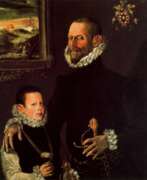

Antón Pizarro was a Spanish painter and printmaker, renowned for his significant contribution to the 'Tenebrismo Toledano' style, a term referencing the distinct use of dramatic illumination in Toledo's art scene. Born around 1552 and active until his death in 1622, Pizarro's life was deeply intertwined with the artistic currents of Toledo, a city that shaped his unique style.
Pizarro's oeuvre, though not extensively documented, reflects the influence of his contemporaries and the broader artistic movements of his time. His works, such as the 'Institución de la Orden Trinitaria por Inocencio III en 1190', showcased at Madrid's prestigious Museo del Prado, highlight his mastery in handling religious themes with a characteristic blend of realism and emotional depth. This particular work, along with others like the 'Nacimiento de la Virgen' and the 'Presentación de la Virgen', reveal a style that balances between Mannerist influences and an early inclination towards naturalism.
Interestingly, his approach to portraiture, as seen in 'Caballero con su hijo', presents a nuanced use of light and shadow, possibly hinting at El Greco's influence. This piece, alongside his contributions to printmaking, such as the illustrations for 'El glorioso San Ildefonso', underlines Pizarro's versatility across different mediums.
For art collectors and experts, Pizarro's work represents a fascinating intersection of Mannerist and early Baroque tendencies. His paintings, characterized by elongated proportions and a warm color palette, not only embody the artistic spirit of Toledo in the late 16th and early 17th centuries but also offer a window into the transitional phase of Spanish art.
If you're keen to explore more about Antón Pizarro's works or stay informed about upcoming sales and auction events related to this remarkable artist, we invite you to sign up for our updates. Our focus remains on bringing to light the works of such historical figures, ensuring that enthusiasts and collectors are always in the loop.
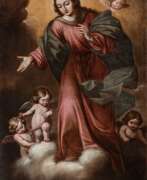

Antonio García Reinoso was a prominent Spanish painter, born in Granada in 1623 and later based in Córdoba, where he passed away in 1677. Renowned for his expertise in the Baroque style, Reinoso's work displays a distinctive blend of influences, including those of Antonio del Castillo and Herrera el Viejo, as well as inspiration from Rubens' engravings.
Reinoso's artistic journey began under the tutelage of Sebastián Martínez Domedel in Jaén. His repertoire includes an impressive array of landscapes, historical subjects, and religious themes. Among his celebrated works are the altarpiece in the church of the Capuchins at Andújar, depicting the Trinity with several saints, and frescoes at the Real Iglesia de Santa Marta in Martos.
A noteworthy aspect of Reinoso's legacy is his contribution to religious art. His series on Saint Ferdinand in the Córdoba Cathedral, created around 1675-76, is a testament to his mastery. These works, alongside his Immaculate Conception at the Museo de Bellas Artes in Córdoba, exhibit his ability to blend religious narrative with artistic elegance.
Reinoso was also an accomplished draftsman, with his drawings showcasing exceptional skill. His works, often crafted with inked quill, pencil, and sanguine, are housed in prestigious institutions worldwide, including the National Gallery, the British Museum, and the Galleria degli Uffizi.
For art collectors and enthusiasts, the chance to explore Reinoso's works, particularly those at the Museo de Bellas Artes in Córdoba, offers a deep dive into the richness of the Baroque era and Spanish art history.
For those interested in the works of Antonio García Reinoso, we invite you to subscribe for updates. Stay informed about new product sales and auction events related to this distinguished artist. Sign up today and ensure you don't miss any opportunity to appreciate and acquire pieces from the legacy of this Baroque master.
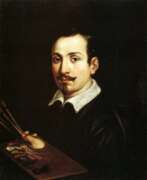

Guido Reni was an Italian Baroque painter, celebrated for his refined and classical approach to art. Born in Bologna, Italy, Reni's career spanned the late Renaissance and early Baroque periods, where he became known for his religious and mythological scenes. His style, characterized by elegance and grace, set him apart from his contemporaries, making his works highly sought after by both religious and secular patrons.
Reni's training under Denys Calvaert, followed by his time in the Carracci workshop, laid the foundation for his distinctive blend of classical idealism and Baroque dynamism. This education, coupled with his interactions and reported rivalry with Caravaggio in Rome, influenced his development as an artist who could balance the dramatic intensity of the Baroque with a serene classicism.
One of Reni's most famous works, the fresco "Aurora" in the Casino dell'Aurora of Palazzo Pallavicini-Rospigliosi, showcases his mastery of classical forms and his ability to convey narrative through expressive composition and vibrant color. This masterpiece, depicting Apollo's chariot led by Dawn, is celebrated for its simplicity and restraint, contrasting the more elaborate compositions typical of his era.
Reni's contributions to religious art are also significant, with works such as "The Archangel Michael Defeating Satan" and "Saint Joseph and the Christ Child" reflecting his capacity to imbue traditional Christian subjects with a profound sense of divinity and humanity. His paintings are distinguished by their delicate treatment of light and shadow, a hallmark of his refined aesthetic.
Collectors and art experts continue to admire Reni's works for their technical brilliance and emotional depth. His paintings, such as "The Massacre of the Innocents" and "Saint Sebastian," are preserved in major museums worldwide, testament to his enduring influence on Western art. Reni's legacy as a bridge between the Renaissance's ideal beauty and the Baroque's emotive power remains unparalleled, securing his place among the pantheon of great artists.
For collectors and experts in the field of art and antiques, Guido Reni's oeuvre represents not just the pinnacle of Baroque painting but also a connection to the cultural and aesthetic shifts of his time. To stay updated on sales, auctions, and exhibitions related to Guido Reni's works, signing up for updates can provide exclusive insights and opportunities to engage with the legacy of this exceptional artist.
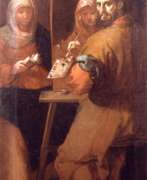

Francesc Ribalta was a distinguished Spanish artist, renowned for his pivotal role in Castilian tenebrism. Born in Solsona, Lérida, Ribalta's artistic journey began in El Escorial, where he absorbed the innovative practices of both Spanish and Italian artists. His early training was a confluence of various styles, including the dramatic chiaroscuro of Cambiaso and the gravitas of Bartolomé Carducho.
Ribalta's career took a significant turn in Madrid between 1585 and 1598, where he focused on religious works and portraits. Notably, his first work, "Crucifixion," marked the beginning of an illustrious career. He later moved to Valencia, further honing his skills and developing a deeply personal style characterized by naturalism, especially in his mature works.
One of the first Spanish followers of Caravaggio's austere tenebrist style, Ribalta's art was known for its stark contrasts of light and dark, adding an intense emotional depth to his subjects. This style profoundly influenced later Baroque painters like Zurbarán, Velázquez, and Murillo. Ribalta's works, such as "Martyrdom of St. Peter," "The Vision of Father Francisco Jerónimo Simon," and "St. Francis Comforted by the Angel," showcase his mastery of tenebrism. These pieces, along with others like "Ramon Llull" and "Saint Sebastian," can be admired in prestigious galleries like The Hermitage, Saint Petersburg, and the Museo del Prado, Madrid.
Ribalta's legacy extends beyond his works. He mentored several artists, including his son Juan Ribalta, who became a notable painter in his own right. Francesc Ribalta's influence on Spanish Baroque art is undeniable, and his contributions to the tenebrist style have cemented his place in art history.
If you're captivated by the works of Francesc Ribalta and the allure of Castilian tenebrism, sign up for our updates. You'll be the first to know about new sales, auction events, and exclusive insights into the world of art and antiques. Subscribe now and stay informed about the latest in Ribalta's artistry!
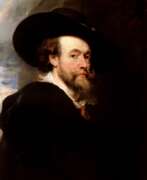

Peter Paul Rubens was a distinguished Flemish Baroque painter, renowned for his dynamic, vibrant, and sensuous paintings. Born on June 28, 1577, in Siegen, Westphalia, Germany, Rubens' family moved back to Antwerp in the Spanish Netherlands (now Belgium) after his father's death. He was raised in his mother’s Roman Catholic faith and received a classical education. He began his artistic training in 1591 and later traveled to Italy, where he was profoundly influenced by Renaissance masters like Titian, Tintoretto, and Veronese. This experience significantly shaped his artistic style.
Rubens' art is celebrated for its emphasis on movement, color, and sensuality. He was particularly skilled in depicting religious and mythological scenes, portraits, and landscapes. Some of his notable works include "The Descent from the Cross" and "The Raising of the Cross," which are prime examples of Baroque religious art, showcasing his unique style that blended influences from Italian Renaissance and his own innovations.
Rubens was not just a painter but also a diplomat, serving at various European courts. He was knighted by both Philip IV of Spain and Charles I of England. His diplomatic missions often intertwined with his artistic endeavors, as seen during his travels to Spain and Italy. In addition to painting, he was involved in designing tapestries, prints, and book title-pages. He ran a large workshop in Antwerp, producing works that were popular with nobility and art collectors across Europe. His studio was in his home, the Rubenshuis, now a museum.
His influence extended to his students, notably Anthony van Dyck, and his collaborative works with other artists like Jan Brueghel the Elder. Rubens' work continued to be celebrated for its vitality and influence on the Baroque style, making him one of the most influential artists of his time.
For those interested in the work and life of Peter Paul Rubens, many of his works can be found in museums and galleries worldwide, including the National Gallery in London, which houses several of his paintings like "A View of Het Steen in the Early Morning" and "Minerva protects Pax from Mars ('Peace and War')".
To stay updated on new product sales, auction events, and more related to Peter Paul Rubens, sign up for our updates. We provide essential information tailored for collectors and experts in art and antiques, focusing on the magnificent work of Rubens and his enduring legacy in the world of art.
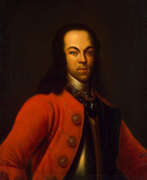

Johann Gottfried Tannauer was a German painter, portraitist, and miniaturist, renowned for his significant contributions to the art scene in Russia during the early 18th century. Born in 1680 in Saxony, Germany, Tannauer initially trained as a watchmaker and studied music before dedicating himself to painting. His artistic journey led him to Venice to study under Sebastiano Bombelli, and he also spent time in Holland, copying works by Rubens.
Invited to Russia by Peter the Great in 1710, Tannauer quickly rose to prominence within the Russian aristocracy, securing a role as a court painter. He was particularly appreciated for his ability to capture the essence and stature of his subjects, which included high-profile figures such as Tsar Peter I and his family. His artworks are notable for their dynamic Baroque style, characterized by intense color combinations and a sense of grandeur.
Several of Tannauer's works are preserved in prominent locations such as The Hermitage and the Russian Museum in St. Petersburg. His portraits are celebrated for their vivid portrayal and historical significance, offering a glimpse into the royal and noble personas of his time.
For those interested in exploring the works of Johann Gottfried Tannauer further, staying updated on exhibitions and sales can enrich your understanding of his impact on art history. You can sign up for updates related to Tannauer's artworks, ensuring you're informed about new insights and opportunities to view his masterpieces at auctions or exhibitions.
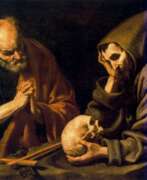

Luis Tristán de Escamilla, known simply as Luis Tristán, was a Spanish painter, born around 1585 in Toledo and active until his death in 1624 in the same city. A prominent figure in early 17th-century Spanish painting, Tristán is especially recognized for his contributions to the Mannerist style, marking a transition to a more naturalistic approach in art.
His artistic journey began under the tutelage of El Greco around 1603, a relationship that profoundly influenced his work. Tristán's style, characterized by elongated proportions and a blend of Mannerism and naturalism, was also shaped by his time in Italy, where he absorbed elements of Caravaggism. This combination of influences is evident in his significant works, such as the paintings for the main altarpiece at the church of Saint Benedict of Nursia in Yepes and "The Adoration of the Shepherds" in the Fitzwilliam Museum, Cambridge.
Tristán's work can be found in prestigious institutions such as the Louvre and the Museo del Prado, showcasing his mastery in religious subjects and portraiture. His legacy continues to inspire, with his paintings held in high regard by art collectors and experts.
For those interested in exploring the depths of Spanish Mannerism and the evolution of European art, Luis Tristán's work offers a unique window into this transformative era. Sign up for updates on new product sales and auction events related to Luis Tristán and delve deeper into the world of this remarkable artist.
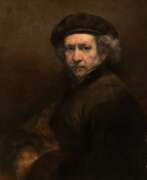

Rembrandt Harmenszoon van Rijn, a Dutch Baroque painter and printmaker, was born on July 15, 1606, in Leiden, Netherlands, and died on October 4, 1669, in Amsterdam. He is celebrated as one of the greatest storytellers in art history, acclaimed for his adept portrayal of human emotions and dramatic narratives. Rembrandt's extensive oeuvre includes portraits, self-portraits, landscapes, genre scenes, allegorical, historical, and biblical themes, as well as animal studies. His artistry shined during the Dutch Golden Age, a period marked by cultural and scientific achievements in the Netherlands.
Rembrandt's education in art began around the age of 10 when he left the Latin School in Leiden to train as an artist. He apprenticed with artists like Jacob van Swanenburg and Pieter Lastman, mastering various aspects of painting. He opened his own studio in Leiden around 1624 or 1625, sharing it with his colleague Jan Lievens. By 1631, he had moved to Amsterdam, where he achieved significant success and trained many important Dutch painters.
Among Rembrandt's notable works are "The Anatomy Lesson of Dr. Nicolaes Tulp" (1632), "The Night Watch" (1642), and "The Syndics of the Amsterdam Drapers’ Guild" (1662). He was also renowned for his self-portraits, creating around 80 over his lifetime, more than any other artist until the 20th century. These self-portraits were not just artistic endeavors but also experiments with facial expressions and lighting effects. Additionally, Rembrandt was a master etcher, transforming etching from a reproductive technique into an art form.
Rembrandt's painting style is characterized by its dramatic use of light and shadow, known as chiaroscuro. His ability to depict materials realistically was unparalleled; his portrayal of metals and fabrics was so lifelike that they appeared to glow and be tangible. He was also known for his impasto technique, applying paint thickly to the canvas, adding a three-dimensional quality to his works.
Despite his artistic prowess, Rembrandt faced financial difficulties and personal tragedies throughout his life. He declared bankruptcy in 1656, a downfall attributed partly to his extensive collection of art objects and curiosities. His masterpieces, however, continued to garner appreciation and influence generations of artists that followed.
For collectors and experts in art and antiques, Rembrandt's works represent a pinnacle of artistic achievement in the Dutch Golden Age. His mastery in portraying the human condition and his innovative techniques in painting and etching make his works highly prized and influential in the art world.
To stay updated on new product sales and auction events related to Rembrandt van Rijn, sign up for our updates. This subscription service is dedicated exclusively to news and events concerning works related to this unparalleled master of the Dutch Golden Age.
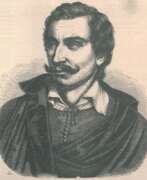

Jacob van Ruisdael, a preeminent Dutch painter, etcher, and draughtsman of the 17th century, is celebrated for his masterful landscape paintings, which significantly influenced the course of Western landscape art. Born around 1628/29 in Haarlem, Netherlands, into a family of artists, Ruisdael was an integral part of the Dutch Golden Age of painting.
Although the specifics of his training are unclear, it's believed that he was influenced by his father, uncle, and other local Haarlem landscapists like Cornelis Vroom and Allaert van Everdingen. Ruisdael's works are renowned for their dramatic depictions of Dutch landscapes, combining detailed natural observation with a monumental composition style. His paintings often feature striking forest scenes or sweeping panoramic views of cities like Haarlem.
Ruisdael's oeuvre spans a wide range, from serene forest scenes and turbulent seascapes to bustling cityscapes and desolate ruins. His handling of light and atmosphere in these settings is particularly noteworthy, adding a dramatic and emotional depth to the landscapes.
Some speculation surrounds Ruisdael's life, including the possibility of him practicing medicine in Amsterdam; however, this remains a topic of debate among historians. His travels seem to have been limited within the Netherlands and possibly to Germany, but he never visited Scandinavia, despite painting numerous Norwegian landscapes.
Today, Ruisdael's works are held in high esteem and are a part of major collections worldwide, including the National Gallery in London, the Rijksmuseum in Amsterdam, and the Hermitage Museum in St. Petersburg. Notable works include "The Jewish Cemetery," "View of Haarlem with Bleaching Grounds," and "Bentheim Castle," all showcasing his characteristic treatment of nature and light.
For art enthusiasts and collectors, Ruisdael's works offer a profound insight into the landscape painting of the Dutch Golden Age. His influence extends across various art movements and continues to be celebrated in the art world. Those interested in his work are encouraged to explore collections in renowned museums and keep informed about new sales and auction events related to Ruisdael's artworks.
For those with a keen interest in the works of Jacob van Ruisdael and the rich heritage of Dutch landscape painting, there is an exclusive opportunity to stay connected with the latest developments in this field. By subscribing to our updates, you will receive timely information on new product sales and auction events specifically related to the art of Jacob van Ruisdael. This service is particularly valuable for collectors and experts in art and antiques, offering insights into available pieces and upcoming opportunities to acquire works from this influential artist.
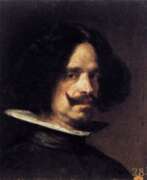

Diego Velázquez, a seminal figure in the history of Western art, was a Spanish painter whose work left an indelible mark on the canvas of art history. Born in Seville, Spain, in 1599, Velázquez's early life was steeped in the rich cultural heritage of his homeland, which would later profoundly influence his artistic direction. His baptism took place in the church of St. Peter in Seville, hinting at a life that would be closely intertwined with the spiritual and cultural fabric of Spain.
Velázquez's journey into art began under the tutelage of Francisco Pacheco, a renowned artist in Seville, where he honed his skills and developed a unique style that married realism with a keen observation of human nature. This formative period was crucial, setting the stage for Velázquez to become the leading artist in the court of King Philip IV, where he produced portraits that captured the essence of the Spanish royal family with unparalleled depth and sensitivity. His work during this period, including iconic pieces like "Las Meninas" and "The Surrender of Breda," showcased not only his technical prowess but also his ability to convey complex narratives and emotions through his paintings.
Velázquez's influence extended far beyond his lifetime, inspiring future generations of artists across various movements. His approach to realism and use of light and shadow would later become a cornerstone for realist and impressionist painters in the 19th century, including Édouard Manet. Moreover, 20th-century icons like Pablo Picasso, Salvador Dalí, and Francis Bacon paid homage to Velázquez, reinterpreting his works and celebrating his enduring legacy in the canon of art history.
The breadth of Velázquez's work is best appreciated in institutions like the Museo del Prado in Madrid, which houses an extensive collection of his paintings. These pieces not only offer a glimpse into the artist's mastery over his medium but also reflect the cultural and historical zeitgeist of 17th-century Spain. Velázquez's ability to capture the human condition, coupled with his innovative techniques, cemented his position as a pivotal figure in the Baroque period and a master of the Spanish Golden Age of painting.
For collectors and experts in art and antiques, Velázquez's oeuvre represents a pinnacle of artistic achievement, offering insights into the evolution of painting and the enduring power of visual storytelling. His works continue to inspire and captivate audiences, underscoring the timeless nature of his artistry.
To stay informed on new discoveries, product sales, and auction events related to Diego Velázquez, signing up for updates is highly recommended. This ensures that enthusiasts and collectors alike remain connected to the vibrant world of Velázquez and the rich heritage of Spanish art.
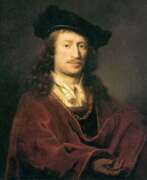

Jan Vermeer, also known as Johannes Vermeer, was a Dutch Baroque painter famous for his masterful use of light and detailed scenes of domestic interiors depicting middle-class life. Born in Delft in October 1632 and died in December 1675 in the same city, Vermeer's work epitomizes the Golden Age of Dutch painting, even though he achieved only moderate success during his lifetime and left his family in debt at his death. His paintings are known for their serene beauty and detailed depiction of ordinary life, often featuring women in domestic settings. Vermeer's technique involved meticulous care and the use of expensive pigments, which contributed to the radiance of his work. Despite the relatively small number of works - today he is credited with only 34 paintings - Vermeer's legacy as one of the greatest painters of the Dutch Golden Age grew considerably in the 19th century, when his work was rediscovered and widely recognized.
Among Vermeer's most famous works are Girl with a Pearl Earring, The Milkmaid and View of Delft, demonstrating his mastery of composition, light and color. These works are held in the world's most prestigious museums, testifying to his enduring appeal. In particular, "Girl with a Pearl Earring" and "The Milkmaid" demonstrate Vermeer's ability to capture the subtleties of light and shadow, creating a sense of intimacy and quiet elegance. His paintings are often set in two small rooms in his Delft home, depicting the same furniture and decorative objects in different arrangements, and often depicting the same people, mostly women, suggesting a deep familiarity and empathy with his subjects.
For collectors and experts in art and antiques, Vermeer's paintings represent not only incredible artistic achievements, but also important historical documents of seventeenth-century Dutch life. The meticulous attention to detail and exquisite interplay of light and shadow in Vermeer's works continue to fascinate and inspire, making him a central figure in the study of Dutch art from this period.
If you are passionate about Dutch Golden Age art and want to keep up to date with new discoveries, sales and auction events related to Jan Vermeer, we encourage you to subscribe for updates. Such a subscription is a great way not to miss any opportunities to further explore or acquire works related to this iconic artist.
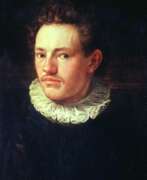

Hans von Aachen was a German painter, renowned for his role as a leading representative of Northern Mannerism. His journey into the art world took him from Rome, where he studied antique sculptures and the works of Italian masters, to Florence and then Venice, securing commissions that would define his early career. Notably, his work caught the attention of the Medici family, leading to significant commissions.
By 1592, von Aachen had become the official painter for Emperor Rudolf II in Prague. This position didn't require him to stay at court, allowing him to work from his residence. His relationship with Rudolf II was pivotal, marking a period where his art flourished under the emperor's patronage, celebrated for mythological paintings and complex allegories. The emperor's appreciation for painting and the arts transformed Prague into a significant art center, fostering a style full of elegance and sensuality known as Mannerism.
Hans von Aachen's style, influenced by Italian Mannerism and northern realism, showcased his versatility through portraits, historical, religious subjects, and allegories. His significant works include the "Allegory of Peace, Art and Abundance," depicting personifications of Peace, Science and the Liberal Arts, and Abundance, celebrated for illustrating the flourishing of these ideals under Rudolf II's reign. This piece, among others, found its home in prestigious collections like the Hermitage Museum in Saint Petersburg.
His contribution to the art world was acknowledged by the European courts, merchants, and the nobility. Even after Rudolf II's death, Hans von Aachen continued his work for Matthias, focusing on imperial portraits until his death in Prague in 1615. His legacy, momentarily overshadowed by the nationalistic perspectives of the 19th century, has been reevaluated, recognizing him as a key figure in European cultural exchange and Mannerism.
For art collectors and experts interested in Mannerism and Hans von Aachen's work, his journey from an admired artist at European courts to a celebrated figure in art history underscores the lasting impact of his work. His ability to navigate the cultural and artistic demands of his time, leaving behind a body of work that continues to be studied and appreciated, makes him a fascinating subject of study.
For updates on new product sales and auction events related to Hans von Aachen, sign up here. This subscription is your gateway to exploring the remarkable works of this distinguished Mannerist painter, ensuring you never miss an opportunity to own a piece of history.
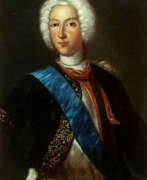

Johann Heinrich Wedekind was a Baltic-German painter born on August 15, 1674, in Reval (now Tallinn, Estonia) and died on October 8, 1736, in Saint Petersburg, Russia. He is noted for his contributions to secular portrait painting in Russia, particularly during the era of Peter the Great, whom he served as a court painter. Wedekind's work helped establish the genre of secular portraiture in Russia, a significant departure from the predominantly religious themes that characterized Russian art at the time.
Wedekind initially trained under the Baltic-German painter Ernst Wilhelm Londicer and spent significant periods working in Lübeck and Riga before relocating permanently to Russia. Throughout his career, he painted many notable figures, including Swedish and Russian nobility and royalty such as King Charles XII of Sweden and Tsar Peter the Great. Many of his works are held in private collections, with some attributed based on his distinctive brush technique, though they were widely dispersed following the October Revolution.
Despite his contributions to Russian art, critical reviews of Wedekind's work tend to describe it as diligent yet mediocre. His life outside of painting was marked by personal responsibilities, including managing a family pharmacy, which might have affected his artistic output. Today, while many of his paintings are no longer in major museums, his legacy as a pioneer of portrait painting in Russia endures.
For updates related to Johann Heinrich Wedekind, including new product sales and auction events featuring his works, sign up for our specialized alerts here. This subscription ensures you stay informed about opportunities to acquire pieces by this historical artist.
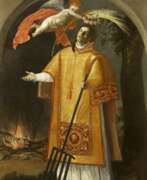

Juan Luis Zambrano, a prominent figure in the Cordoba School of painting, was a Spanish artist renowned for his unique blend of cultural and artistic elements. Born in Cordoba in 1598, Zambrano's journey as a painter began under the guidance of Pablo de Céspedes. His move to Sevilla in 1608 exposed him to the works of masters like Zurbarán, Herrera el Viejo, and Roelas, profoundly influencing his artistic development.
Zambrano's art is celebrated for its meticulous technique and monumental figures, drawing inspiration from greats like Miguel Ángel. His masterpieces include the "Ángel de la Guarda" in the Museo Diocesano de Córdoba, which showcases a notable evolution from his earlier works. This piece is particularly remarkable for its precise, sculptural drawing and vibrant, yet subtle color palette.
Another significant contribution of Zambrano was the paintings for the main altarpiece of the Convento de Santa María de Gracia in Córdoba. His "La Anunciación" is a testament to his ability to blend Mannerist elements with emerging Baroque trends. The painting is a simple yet captivating composition, highlighting the traditional symbolism of the Annunciation with naturalistic details and a baroque representation of San Gabriel.
Zambrano's legacy extends beyond these notable works. His creations like "El Martirio de San Esteban" and "La Caída de los Ángeles," housed in the Catedral de Córdoba, and "David con la cabeza de Goliat," displayed in the Museo de Bellas Artes, are testaments to his mastery and influence in the Cordoba School. His works continue to inspire and captivate art enthusiasts, collectors, and experts alike.
For those intrigued by the fascinating world of Juan Luis Zambrano and his contributions to the Cordoba School, we invite you to sign up for our updates. By subscribing, you'll stay informed about new product sales and auction events related to this exceptional artist. Join our community to explore more of Zambrano's extraordinary art and legacy.